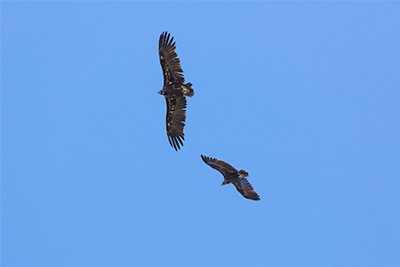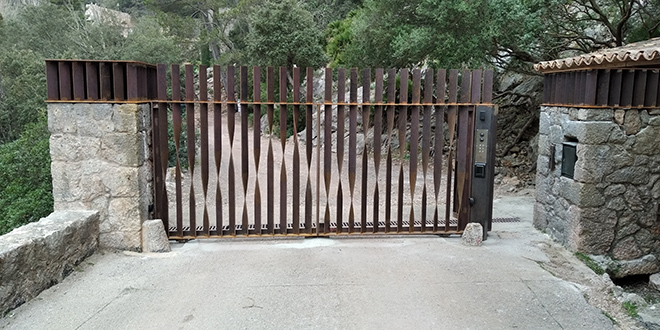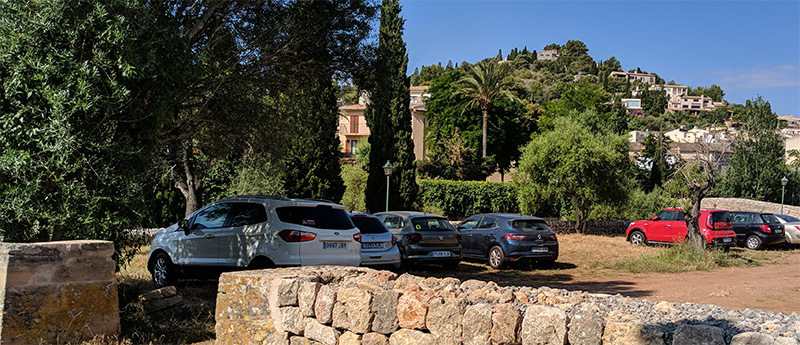with all the necessari security mesures (mask, distance and clean hands).



Reservations for guided tours of the Ternelles' Farm
| Mon | Tue | Wed | Thu | Fri | Sat | Sun |
|---|---|---|---|---|---|---|
| 1 | 2 |
3
Closed |
4
Closed |
5
Closed |
6
Closed |
7
Closed |
| 8 | 9 |
10
Closed |
11
Closed |
12
Closed |
13
Closed |
14
Closed |
| 15 | 16 |
17
Closed |
18
Closed | 19 | 20 |
21
Closed |
| 22 | 23 |
24
Available 8 |
25
Available 15 |
26
Available 14 |
27
Available 1 |
28
Available 1 |
| 29 | 30 |
Instructions for Authorization Requests
The first step is to fill out the reservation request on this website with the date and number of guests who are attending the visit. The maximum capacity is 15 guests per day. The minimum age to participate in the guided tour is 16 years, minors’ register can be done in case they are accompanied by a responsible adult. At least 4 guests will be required to proceed with the visit.
- The reservation MUST BE DONE 24 HOURS PRIOR THE VISIT. Once the date is selected, you must fill out a form and send it with all the fields duly completed.
- The ENTRY TIME is at 9.15 at the Ternelles barrier, and the tour starts at 9:30 a.m.(punctuality required).
- The EXIT LIMIT TIME is at 3:00 pm the latest.

You can find the exact GPS location in the following link: How to get?
In case of NO POSSIBILITY TO ATTEND THE VISIT we kindly ask you to CANCEL THE RESERVATION.
To access into the area by any kind of vehicle is not allowed, the hike can only be done on foot. You can find a parking near the Roman Bridge, right before the beginning of Ternelles road. It is 1.8 km (about a 25 minutes walk) from the car parking to the starting point of the tour.
You can find the exact GPS location in the following link:
How to get?

Another option would be to park on the same Ternelles Road, in a small parking lot. Must be noted that the maximum number of places in this parking is very limited, and the road in this strectch is very narrow.
ANIMALS OF ANY KIND ARE NOT ALLOWED, since there is free wildlife inside the farm.
If you have any question, or you need more information, you can call the tour guide Andrea Landeira at the phone number 683 327 512. CALLS will be attended only from 08:00 a.m. to 4:00 p.m.; from Wednesday to Sunday. You can always leave a text or WhatsApp message on the previously mentioned number.
Arrival from Palma de Mallorca
- To get to the Ternelles road you have to take the Ma-13 Highway Palma-Alcúdia direction.
- Take the exit 40 (Sa Pobla; Crestatx; Pollença; Muro)
- At the roundabout, take the third exit "Pollença; Crestatx".
- Then follow the Pollença Road (Ma-2200) POLLENÇA DIRECTION for about 10km.
- At the Pollença roundabout, where you will see a big iron rooster sculpture, take the third exit "Port de Pollença; Deixalleria" through the Ma-2200 road.
- Continue straight ahead through the Pollença Road (Ma-2200) direction to PORT DE POLLENÇA until the next roundabout.
- In this roundabout, where you will see two shops called "Teixits Vicens" and "La Braseria", take the second exit direction "Sóller; Lluch" through the Ma-10 road. However, place yourself in the right lane immediately, thus it will allow us to continue straight ahead.
- If you keep going through the Ma-10 road, at less than 1 kilometer away, the Camí de Ternelles will be on your right side; while the Roman Bridge and the mentioned parking lot will be on your left side.
Ternelles Guided Tour:
Recent history:
The Ternelles farm was owned in 1511 by Francesc Desbrull. In 1962 the property was shared with Font de Roqueta (a knight of to the Calatrava order). In 1771 passed into the hands of Isabel Sureda Fortuny and some of the buildings that there are today were already there, such as the blood mill. In 1863 it belonged to the heirs of Marià Vilallonga with a total of 1526 acres. Finally, in 1968, it passed into the hands of March's family(1). Currently, the Pollença's Pine Tree Festival is celebrated in the Ternelles farm during the Sant Antoni holidays. This celebration consists of a pine logging done by the people of the town, who then proceed to load the log onto a heavy iron carriage, and taking it up to Pollença by pulling it themselves with numerous ropes. Finally, after the pine tree has arrived at the square, the pine gets soaked with soap in order to make it slippery, gets put on its feet, and the inhabitants of the town try to climb it without any other help than their own strength and ability. When someone manages to get to the top of the pine tree, the festival ends.
The Ternelles excursion:
 Accumulated slope (Source: wikiloc.com)
Accumulated slope (Source: wikiloc.com)- At the beginning of the excursion we will see an old irrigation ditch belonging to Roman Empire times. This irrigation ditch has been used to channel water from the mountains of Ternelles to the village of Pollença for thousands of years.
- A little later, we will be able see a flour mill. This mill used the force of a waterfall to move large wood shovels in order to grind the grain.
- Continuing the way, we will see a closed parcel in which a blood mil is located. These artifact is called like this due to the fact that it’s pulled by animals (usually a donkeys or horses) for the extraction of water from shallow wells.
- We will find restricted area access. This detour leads to Coll dels Coloms, which is the area where vultures nest. This is why it is an area of exclusion due to biological restriction. In the same area there is an old church known as "La Cel·la".
- At the right side of the path, inside an oaks’ forest, we will be able to see circular stone constructions known as lime ovens. Formerly, in the mountains of Mallorca, it was common to work as a calcinator. The calcinators used calcareous rocks (typical in the composition of the Mallorcan soil) to build circular furnaces in the center of which a great fire was kindled. The chemical reaction produced by the large amount of heat for a relatively long time (10-12 days) extracted the lime from the insides of the rock, and fell on the ground. They let it cool for a few days, covering the top of the oven with vegetation in order to preserve the moisture’s lime. After a few days, the lime was collected and transported to the villages in order to be sold (2).
- The path runs through an oaks forest. However, once the lime kilns are left behind, it leads to a pine forest. The pine tree ecosystem has been gaining ground in the oak-type ecosystem over time, which was the most characteristic of the Mediterranean region. Is for that reason that the local administration has allowed a land management that consists in the removal of pine for the recovery of the cultivation of olive trees.
- After crossing a field of yellow flowers white mustard (Sinapis alba), we will see the Castle of the King. This castle dates back to the 13th Century and, though its function has historically been for surveillance or protection, it was also used as a residence for the King Jaume III. This castle is one of the three rocky castles in Mallorca (Castell del Rei, Castell de Santueri and Castell d'Alaró). The access to the castle is restricted since this zone is an area where the vultures comes toe at and nest. In the island of Mallorca there is a total of 38 breeding pairs, of which 20 are located in Ternelles farm, which is the largest colony of black vultures on the island. The other colonies are mainly found in the area of Mortitx and Ariant, in Serra d'Alfàbia.
- On the right side we will see, in order, the mountains known as "Puig de Can Groc", "Serra de Sant Vicenç" and "És Cornavaques" (in this last one, there is an old path that links Cala Castell with Cala Sant Vicenç, known as "Es Pas dels Pescadors"). Behind us, we will be able to see an excellent Puig de Tomir, with its colossal neighbour Massanella next to it, and the presence of Puig Major right behind them.
- At the viewpoint of Cala Castell it is very common to spot vultures planing at high altitudes near the rocky peak. In addition to the black vulture (Aegypius monachus) , other bird species of interest can be observed, such as the peregrine falcon (Falco peregrinus), the Eleonora's falcon (Falco eleonorae), the common kestrel (Falco tinnunculus), the booted eagle (Hieraaetus pennatus) the western osprey (Pandion haliaetus), the Bonelli's eagle (Aquila fasciata) or the Egyptian vulture (Neophron percnopterus).
- The access to the beach is TOTALLYFORBIDDEN by biological restrictions due to the Natural Resources Management Plan.
 Topographic map (Source: Instituto Geográfico Nacional)
Topographic map (Source: Instituto Geográfico Nacional)
1 Gran Enciclopèdia de Mallorca v. 17 Promomallorca: Palma, 1991, p. 157-158
2 Elements de la societat pre-turística mallorquina – Forns de calç i calciners, Gaspar Valero i Martí. p. 191 - 207
 Fundación Vida Silvestre Mediterranea
Fundación Vida Silvestre Mediterranea